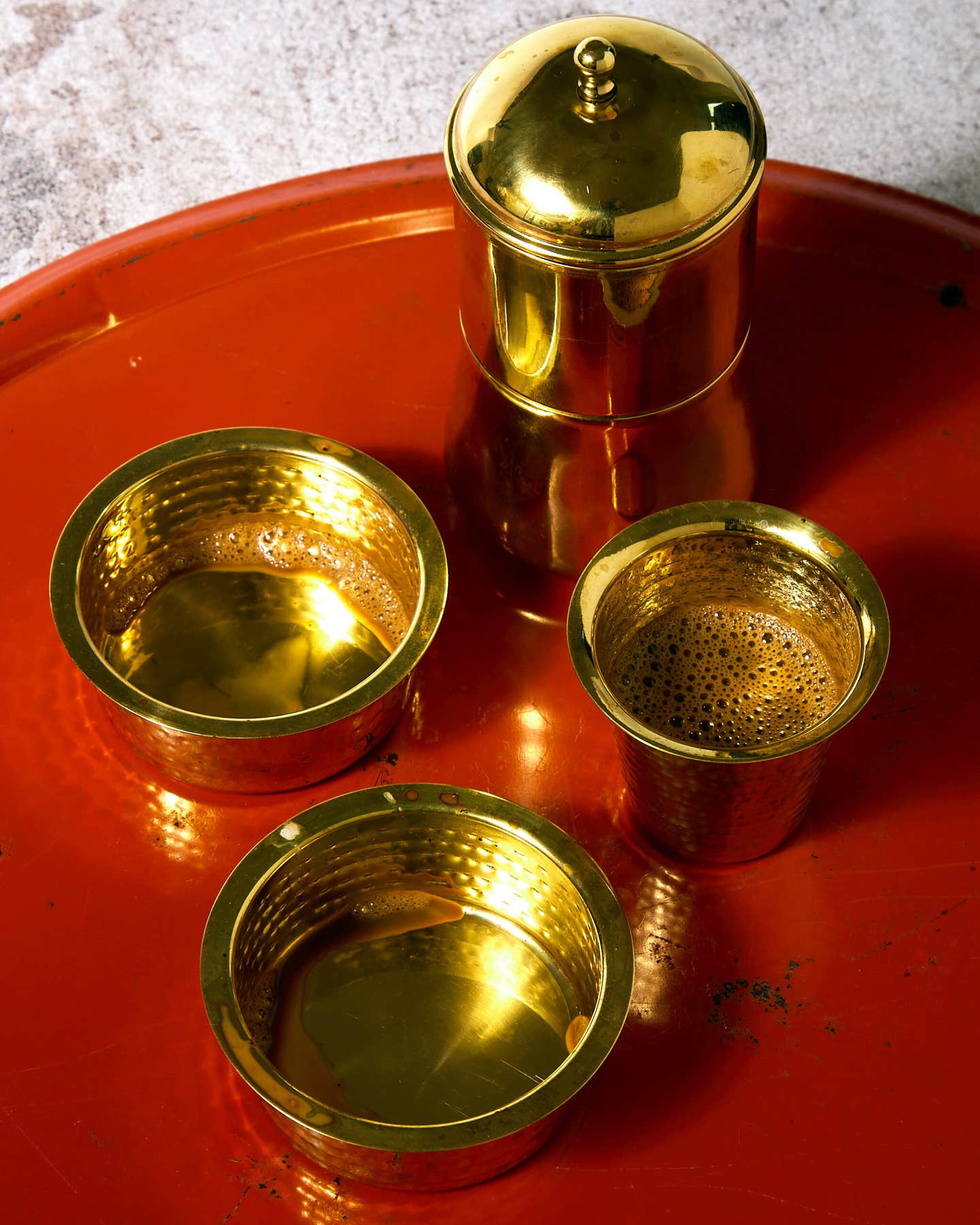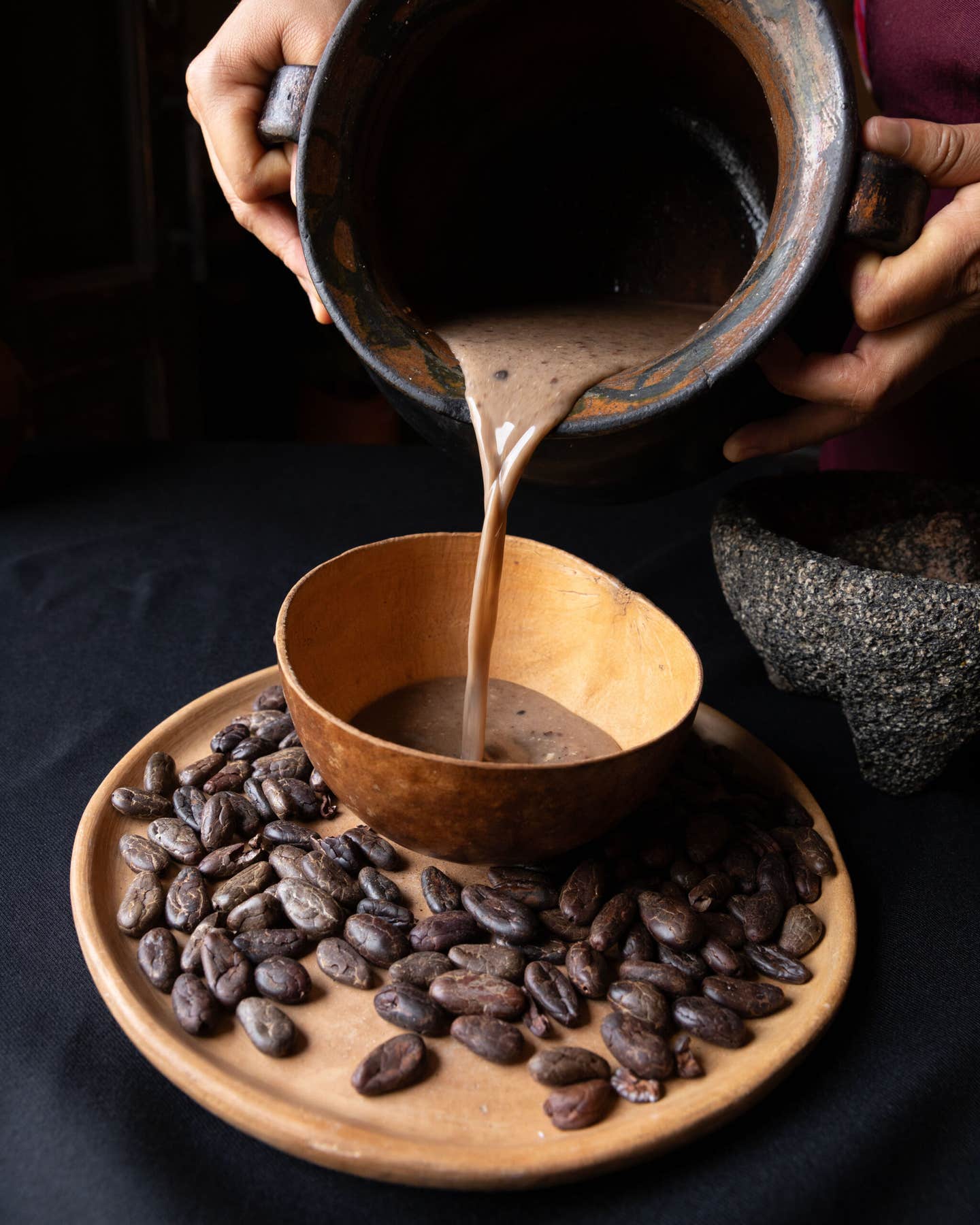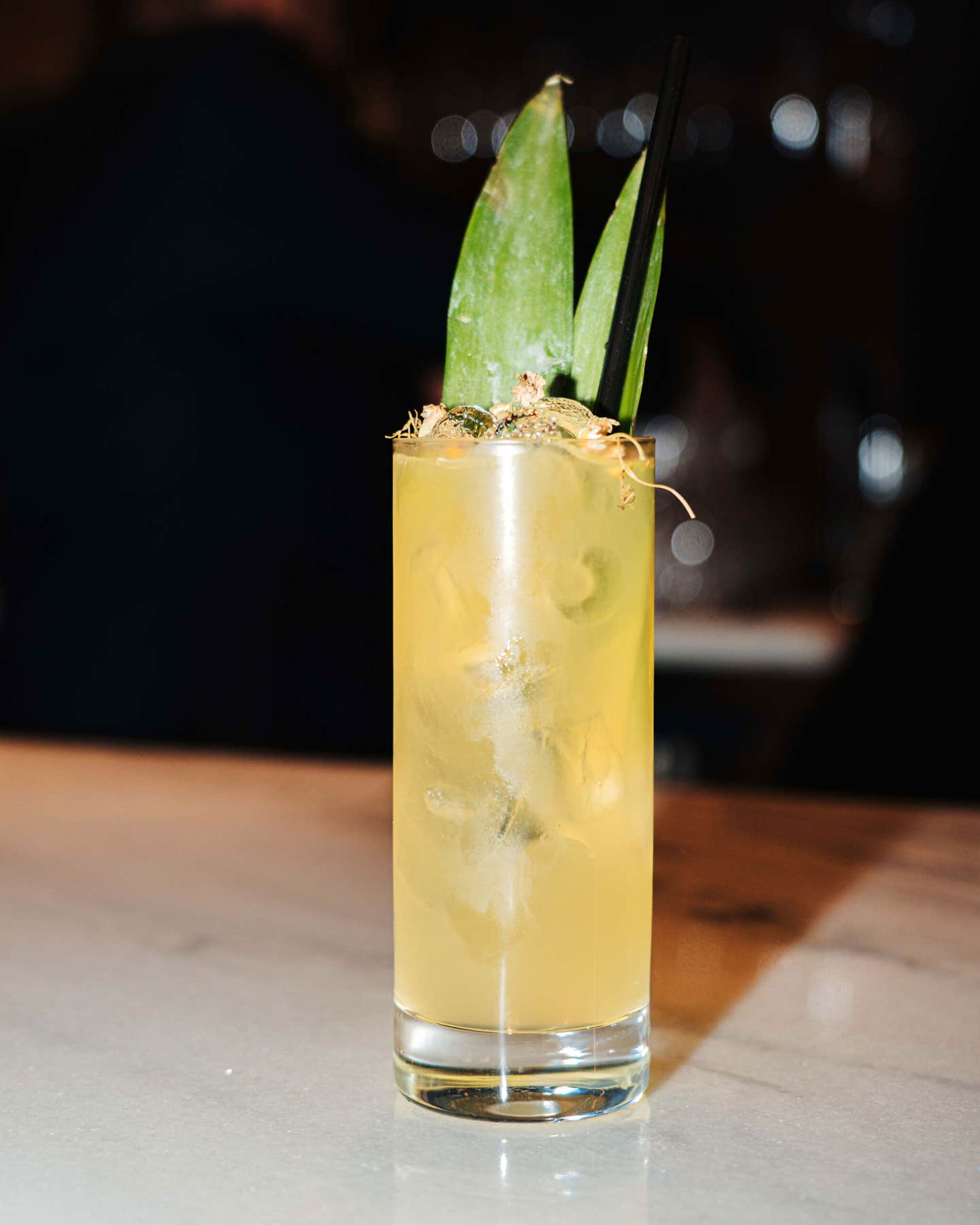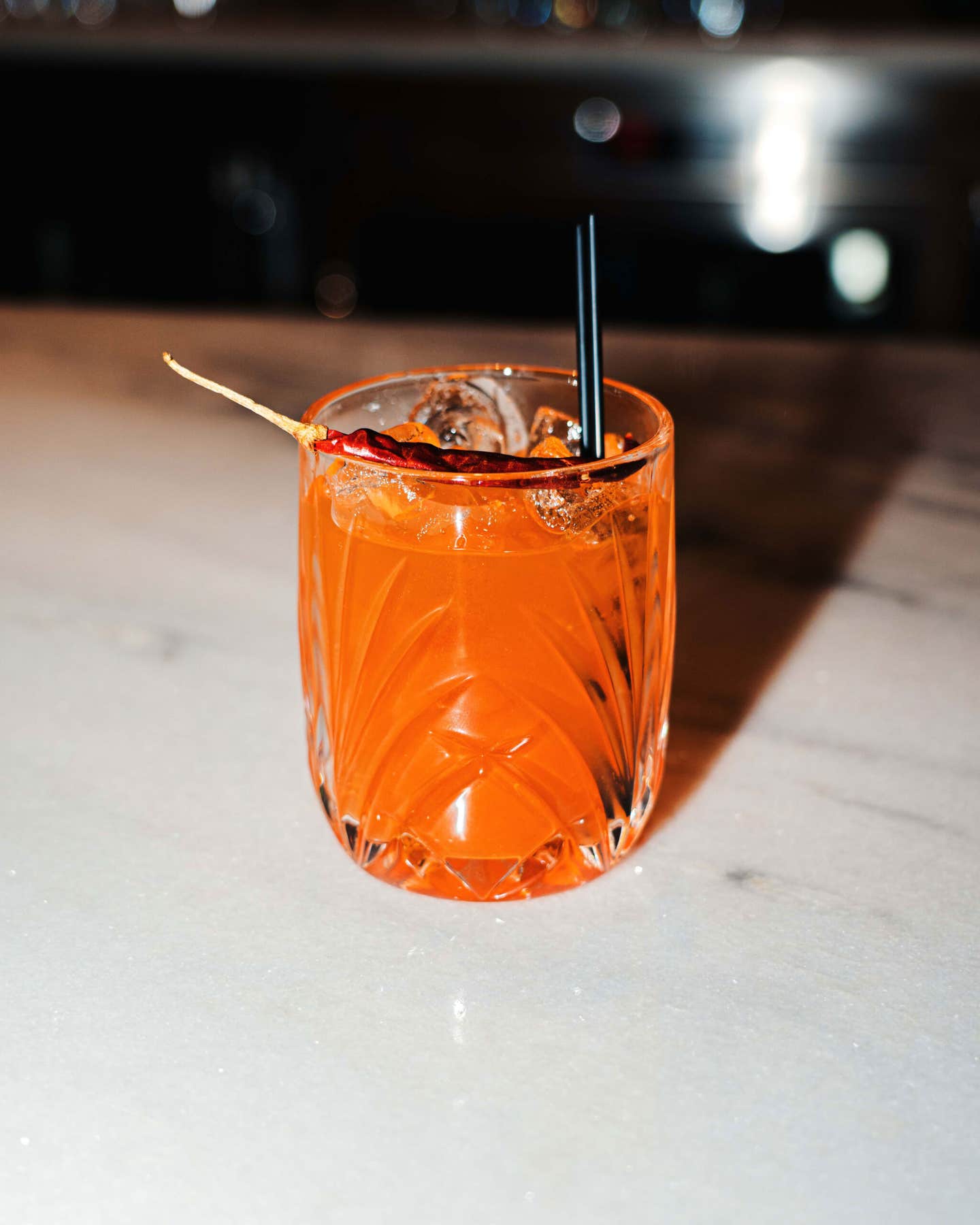
Taster’s Choice
I walk along the cobblestoned footpath that leads to the main house at Hacienda La Minita, Bill McAlpin's coffee plantation high in the central mountains of Costa Rica. Beneath me, at the bottom of a steep slope, a kidney-shaped pool hangs suspended above a deep valley that's entirely encircled by mountains. The terrain rises and falls in deep emerald folds, as if a fuzzy green sweater has been thrown over the land. Surrounding the hacienda in all directions are row upon row of stout green coffee plants loaded down with dark red fruit. It looks more like a movie location than a coffee farm—but it's also where, many experts agree, some of the best coffee in the world is grown.
McAlpin's 700-acre farm, considered fairly large by Costa Rican standards, is set on steep, volcanic, highland terrain ranging in altitude from 4,000 to 7,000 feet. Rainfall is generally predictable, the temperature is mild, and damaging frost is rare. The natural conditions here—about 22 very circuitous miles south of San Jose, the capital—are, in fact, ideal for growing high-quality coffee; but what sets La Minita apart from other equally well situated farms are its owner's methods and his obsession with quality.
Before becoming a coffee farmer, Bill McAlpin lived a life that even Hemingway might have envied. He was born in Texas 46 years ago but, because of his father's career in international trade, he lived most of his life elsewhere. As a young man, he split his time between studying in England and working on his father's many farms —cattle, rice, and coffee—around Latin America. As a student at Oxford University, McAlpin played polo and eventually turned semiprofessional, playing for a number of British teams. He competed before Queen Elizabeth and, at times, against her son Prince Charles.
In 1974, McAlpin's father, William, called his son in England and asked him to come to Costa Rica to help him run his various businesses full-time. McAlpin left Oxford before taking his degree and worked with his father for four years until the senior McAlpin decided to retire and sell his enterprises. When Bill learned that the coffee farm was about to be sold, he recalls, he realized how much he loved it. He purchased the best section of the large estate in 1979. Though his father had turned out a product that fetched top prices from European buyers, McAlpin wanted to make it even better. "I wanted to make it perfect," he stresses. "I wanted to make the most elegant, balanced coffee possible." In 1987, the La Minita estate label was launched.
There are dozens of species of the coffee plant, but only two of them, Coffea canephora and Coffea arabica, account for most of what the world drinks. Coffea canephora, commonly called robusta, is a high-yield, low-quality plant that grows easily on flat land in most tropical and semitropical areas. Quantity—not flavor—is the goal of robusta growers, whose beans usually end up in tins on supermarket shelves. Arabica, on the other hand, is responsible for the world's finest coffees, and for three-quarters of the world's total coffee production. These coffees, which are much more difficult to grow, do best at high altitudes in subtropical, equatorial areas, and are usually distinguished and marketed by the region or country they come from—such as Java, Guatemala, Kenya, and Costa Rica.
At La Minita, McAlpin has instituted growing practices that his peers consider both unorthodox and risky. He grows two arabica cultivars: the prized caturra and an older, lower-yielding one that McAlpin calls tipica. Some growers, McAlpin says, regard his cultivation of tipica as quixotic. But coffee derived from a combination of the two trees' fruit may be more nuanced, he says, and, by growing both, which flower at different times, his harvesting period is extended. McAlpin is also considered somewhat offbeat for having banned commonly used chemicals from his fields—but he believes they compromise the product, the soil, and, more importantly, the farmworkers' health. Rather than using pesticides, he says, he concentrates on maintaining strong trees that can fight off pests on their own. Instead of using herbicides, he hires laborers to weed the fields with machetes. His methods cost more, but for McAlpin, there is no alternative.
That McAlpin offers employee benefits also sets him apart from other growers. Last year, he built a $100,000 clinic on the farm that provides free medical and dental care to the workers and their families. He pays into the workers' savings plan. The children who attend the local school wear uniforms paid for by La Minita, and the farm even supports three soccer teams. "Some people find my farming and human-resources policies unusual, or eccentric," McAlpin notes drily, "rather than the serious business positions that they are....I'm taking the long-term view here."
In an industry in which pickers are often overworked and underpaid, and enjoy few benefits, La Minita gets high marks for its working environment. Dan Cox, owner of the Burlington, Vermont-based Coffee Enterprises, a firm that offers laboratory analyses of coffees, has visited many farms and says that "Bill McAlpin set the high standard."
George Howell, credited as one of the pioneers of specialty coffee, sold his very successful company, The Coffee Connection, to Starbucks a few years ago, and continues to enjoy a revered status within the industry. Based in Boston, he's an aficionado who looks for character and consistency in his cup. "I'm looking for the same thing a drinker of fine wine does," he says, "the unique flavor of the place." He finds these qualities in some estate coffees, such as La Minita, which come from single farms or small groups of farms with identical growing conditions. He drinks La Minita regularly for these reasons, as well as for its flavor, which he describes as nutty with hints of maple syrup. In his opinion, no other coffee estate has been able to match McAlpin's. He contends that the other growers are impatient, cut corners, and ultimately put out an inferior product. "Bill never makes those mistakes."
Creating a coffee of this quality is demanding and unpredictable work. As I sit on the wide veranda of the plantation's main house with my host in mid-January, I ask about this year's harvest. McAlpin, a large man with a sometimes gruff demeanor and piercing blue eyes, looks up from his ever-present cup of coffee. He answers graciously, though I notice some strain in his voice. In other parts of the coffee-producing world, several rainy seasons mean several yearly harvests—up to five. In this part of Costa Rica, however, there's just one long rainy season (from about April through early November) and only one harvest, which usually starts in mid-December and ends in March. Early rains this year, he explains, may have caused the trees to flower prematurely and to lose their fruit. Exactly how much damage was done? It's too soon to tell.
McAlpin invites me to join him on his daily rounds of the fields to check on the harvest. Together, in the back of a Toyota pickup, we descend one of the farm's steep dirt roads that zigzag across the mountain through the dense coffee trees. We stop near a huge poro tree with beautiful orange blossoms and look for pickers. During harvest, about six hundred workers tend these fields, yet the landscape is so lush that I can't spot any of them. But I can hear soft harmonies drifting up from the hillside on a warm breeze. (They were singing a song called "La Puerta Negra," I later learned—a favorite with some of them.)
We arrive at a level area where dozens of workers are gathered. Families (in some instances, three generations) toil together, sorting out the inadvertently picked, bright green, unripe fruits from the ripe red ones. (The lower-quality beans will be sold to domestic merchants and consumed in Costa Rica.) People are laughing and music blares from an old truck. Here, pickers trade their heavy bags of fruit to the encargado, or foreman, for cash. McAlpin walks slowly towards two harvesters. He talks to them (in Spanish) about the picking and asks how many "cherries", as the coffee fruit is called, are left on the trees. As McAlpin listens to their reply, he frowns. That early rain has damaged the crop is now confirmed. (It turned out that the 1995 harvest was about 20 percent below average.)
At the end of the workday, the fruit is delivered to a large holding shed. The berries are then taken to a mill (not owned by McAlpin) where they undergo "wet" processing. Though the cherries have left the farm, they are still closely monitored by La Minita employees, who supervise every step of the milling. "Processing coffee beans," McAlpin says, "is as complex as making wine."
At the mill, the fruit is poured into a water-filled siphon and channeled to a machine that removes its skin, revealing two green beans surrounded by a gummy membrane. The beans are then stored in tanks for between 14 and 40 hours, until the sticky coating becomes detached. The membranes are washed off, and the cleaned beans are drained and then set out for about a week on large patios to be dried in the sun. (Drying machines are used when necessary.) Next, the beans are stored in a silo for at least three weeks until they harden. Finally, two more layers—the parchment and the silverskin—are removed before the beans are sorted by quality and packed into bags for sale to roasters in the United States.
McAlpin's devoted efforts, from the fields to the drying decks, are not in vain: Every La Minita bean is spoken for by eager buyers—even before it's grown.
Keep Reading
Continue to Next Story










